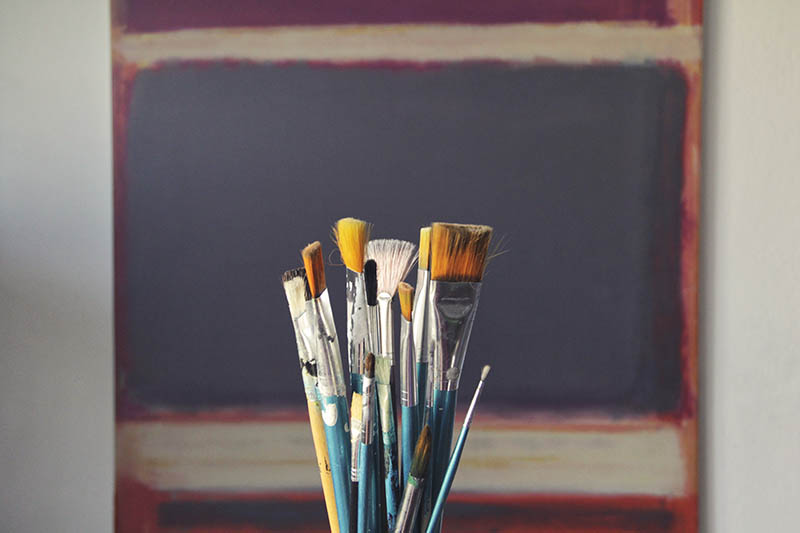
Art is often described as something inherently therapeutic. Whether it’s painting, sculpture, writing or dance, engaging with or creating art has long been seen as a way to relieve stress. In fact, so potent a therapeutic agent has art been perceived that it is often a part of the treatment in psychiatric hospitals and rehab clinics; in this context, art has been found to be highly effective at reducing patient anxiety and tension, helping them to recover much more quickly.
But how much of this is grounded in reality and how much is based on a perception of art’s therapeutic power?
Does art really have the power to relieve stress and anxiety as effectively as people claim?
Are certain forms of art better for relieving tension?
Can you use art therapy techniques to relieve stress at home?
In this article, we’re going to explore the link between art and stress in detail to see how much help artistic pursuits can give to people struggling with chronic stress and anxiety. If you have personal experience using art therapy to reduce stress and fight anxiety, please share them with other readers in the comments section at the end.
What is art therapy?
Art therapy is a form of creative self-expression that is said to relieve stress. The use of art as a therapeutic tool is not new. In fact, millions of people have turned to art therapy to deal with their mental health symptoms. It can help people find themselves and their capacity to heal. By using a combination of art and psychotherapy, art therapy helps people find inner peace and better understand themselves. It can also help people overcome depression and PTSD.
A recent study concluded that art therapy can help patients cope with anxiety and depression. It helped students become more self-aware and less test-induced anxiety. A 2020 study of sixty undergrads found that those who participated in art therapy were more mindful and had less test anxiety. A trial conducted in 2019 showed that women suffering from anxiety responded positively to 10 to 12 art therapy sessions. They also reported a reduced level of anxiety and an improved quality of life.
It is important to recognize that many children with chronic illnesses experience a wide range of emotions. Art therapy helps them process these emotions and learn healthy coping mechanisms. The therapist may also share insights with parents regarding the child’s behavior. Art therapy is also helpful in helping children cope with a range of mental illnesses, including Alzheimer’s disease and PTSD. The art therapy method can be effective in treating mental health conditions in both children and adults.
How does art therapy help your mental health?
Art therapy is an expressive activity that aims to enhance mental wellbeing. During sessions, the therapist guides you through the use of various art materials. These materials may include pencils, pastels, clay, or paint. Some clients begin by creating a piece of art and reflect on it later, while others work with a theme that is brought to the session or is identified during the initial discussion with the therapist.
While many people don’t consider it an option for their mental well-being, art therapy can greatly improve the quality of life of a person suffering from a mental illness. It has been shown to improve self-esteem and provide a safe outlet for emotions. It can also help you identify emotional roadblocks and improve communication. And for many people, art therapy can help them cope with their chronic illnesses better.
Self-worth is directly related to one’s mental health. If one is struggling with depression or anxiety, a treatment like art therapy can help to boost self-esteem. Children can benefit from art therapy because it can help them deal with puberty, sexuality, and identity issues. By clearing the mind, artists can create work that helps them feel better about themselves. In addition to this, visual representations can help people understand their thoughts and feelings in a deeper way.
Mental health benefits of art therapy
There are many benefits of art therapy. It helps to reduce depression and anxiety, as it provides a non-verbal means of expressing oneself. Art is also beneficial for those with mood disorders, as it encourages the creation of new neural pathways in the brain. These pathways can improve overall well-being, prevent depression, and slow the aging process. Here are some of the most important reasons to explore art therapy as a therapeutic tool.
On the physical level, there is some really solid evidence that art therapy can drastically change the neurochemical state of your brain. Clinical trials show that engaging with art can release dopamine in the brain. More details on this below.
Psychotic disorders such as schizophrenia often have multiple causes. Many sufferers struggle to balance their lives, with their drug-of-choice often taking precedence. The therapeutic use of art can help these patients regain their focus, build discipline, and live a more productive life. Many researchers believe that art therapy can even help to combat chemical imbalances in the brain. Despite its many benefits, art therapy has often been overlooked.
There are many benefits of art therapy for mental health. It can provide an opportunity to process emotions and symptoms in an enjoyable way. Many studies have shown that people who participate in art therapy feel more tranquil and happier than those who do not. The therapy also helps patients develop their confidence and self-esteem. Many people seek art therapy because it helps them express themselves creatively. But art therapy is not just for those with depression and anxiety. It can benefit anyone who wants to feel better.
Can art relieve stress?
The answer to the question “Can art relieve stress?” is a resounding “yes.” It is an incredibly relaxing activity that is produced by people with free time and free minds. People who create art do so because they are relaxed and free of stress. This relaxing effect is shared by everyone, from artists to ordinary people. Art has many health benefits, including a reduction in stress hormones. This study supports the benefits of art therapy for everyone.
When people make art, they talk to others in a more relaxed manner. Great artists often communicate through their work, so when you make art yourself, you can talk about your feelings with others. The activity also reduces your anxiety levels, as it creates a distraction for the brain. The mind can take a break from stressful thoughts and let it recharge and focus on the task at hand. It is a great form of self-expression.
It has been shown that people with depression, anxiety, and other mental health issues can benefit from art therapy. Moreover, art therapy can improve the quality of life for individuals with mental health issues. There are several studies to support this fact. Some studies have demonstrated that art therapy reduces cortisol levels by up to 75% after 45 minutes of art-making. For more information about the benefits of art therapy, please read the rest of this article.
How does art affect the brain?
Creating artwork stimulates the brain, improving overall brain function and increasing levels of serotonin. It also stimulates the formation of new neural pathways, improving overall well-being. Art also helps to release tense emotions and reduce stress. People who are art-loving report that their sense of well-being is greater after creating something they love. Moreover, the activity has been shown to slow down the aging process.
One study at Drexel University found that art-making reduces levels of stress hormones. This research proved that art is beneficial for both the artist and the audience. Even adults can benefit from making art. Making a painting or drawing, for example, can help you become more aware of the patterns that appear in your dreams. It can also help you understand areas in your life that need more attention. Whether it’s an abstract painting, a painting, or a watercolor painting, creating art is a wonderful way to relieve stress.
Moreover, creating art can help relieve stress. Art creates new neural connections that engage a different part of the brain. By doing something creative, you can let your feelings out and gain insights that would otherwise remain unspoken. The stress hormone cortisol is also reduced, reducing the level of this hormone. Art may even help you find a fresh perspective on your problems. That’s why it’s beneficial for people suffering from stress and depression. It may also explain why drawing seems to help with ADHD symptoms in adolescents and adults alike; by reducing stress levels, you allow dopamine and serotonin levels to rise which is known to help counter symptoms of ADD/ADHD.
How to use art to relieve stress at home
If you’re feeling stressed, consider taking an art class. Colouring books can help you relax and unwind, and they’re fun for people of all ages. Colouring books often have intricate designs and patterns, so even those who aren’t artistic can benefit from taking them. The best part? You don’t need any special skills to do them! In addition, they can help you express your emotions and practice mindfulness.
One study found that creating a picture helped those who were slightly stressed reduce anxiety and mood. Subjects were given oil pastels, charcoal pencils, and regular colored pencils to choose from. Interestingly, their moods weren’t evaluated, just the actual art-making process. That means that the results don’t matter – as long as the process is fun and free from self-doubt, that’s all that matters.
Another way to make your environment more relaxing and stress-free is to participate in art therapy. This therapy can help you process emotions and move forward from past situations. By releasing emotions through art, you can let go of hurtful and stuck feelings. This can help you move forward and find happiness. If you don’t have an art therapy class, consider taking up an art class or visiting a gallery. The benefits of taking art therapy classes are plentiful.
In addition to helping people manage stress, art can also help reduce mental fatigue. Creative activities, such as painting, drawing, and music, are proven to be excellent stress relievers. They can also be a great way to practice mindfulness. The healing power of the imagination is powerful. Art therapy can help relieve stress without the help of specialists. The benefits of this therapy are well known, so take advantage of it today. You’ll be happy you did.
- Best Nootropics For Creativity (2023)
- Can art relieve stress?
- Is Art Therapy Good For PTSD?
- Does art release dopamine?
- ADHD and Creativity: Is there a link?
- Art Therapy for OCD: Is it effective?
- Does painting help with dementia?
- Does Lion’s Mane Increase Creativity?
- Does Modafinil make you creative?
- Does Noopept Boost Creativity?

Brian Johnson is current Editor of Vagarights.com and a long-time writer for VAGA. A former psychologist, Brian is passionate about improving mental health and finding ways to stave off cognitive decline. He is an expert on nootropics, cognitive enhancement and biohacking more broadly. You can see his work on Google scholar.
Leave a Reply